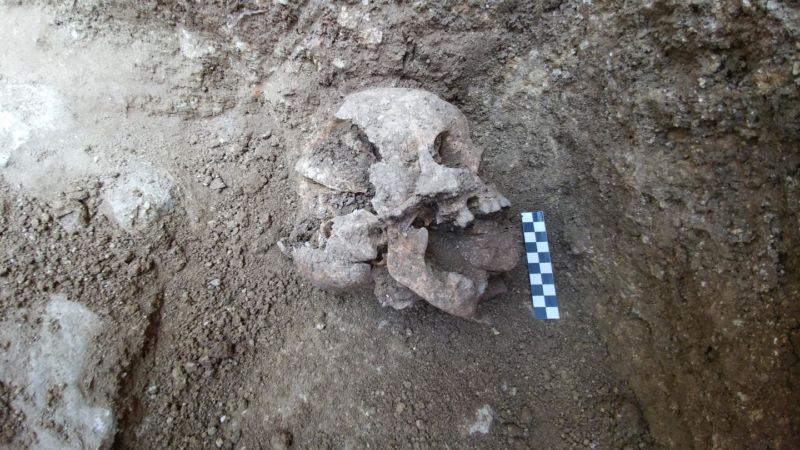The Enigmatic Female Skull from 16th Century Venice: A Grisly Tale of Vampire Mythology and Plague Fears
In the fascinating world of historical archaeology, discoveries of ancient remains often unveil intriguing stories from the past. One such discovery is the female skull found in Venice, dating back to the 16th century. This macabre find has sparked interest and curiosity among historians, shedding light on the beliefs and fears surrounding vampires and the plague during that era. The peculiar feature that sets this skull apart is the placement of a brick inside its mouth, believed to be a preventative measure to stop her from feeding on plague victims. This article delves into the historical context, the vampire myth, and the terrifying plague that gripped Venice during the 16th century.
The 16th century was a tumultuous period for Venice. The city-state was a major trading power, but it faced numerous challenges, including economic decline and recurring outbreaks of the bubonic plague, commonly known as the Black Death. The plague had devastating consequences, claiming thousands of lives and instilling widespread fear and panic.
Belief in vampires has ancient origins and can be found in cultures around the world. In the European context, vampires were commonly associated with the undead – malevolent creatures that rose from their graves to feast on the blood of the living. The belief in vampires was often intertwined with local superstitions and fears, and it was thought that they spread diseases and plagues.
The discovery of the female skull in Venice presented a baffling mystery. Anthropologists and historians studying the remains were intrigued by the presence of a brick placed deliberately within the deceased woman’s mouth. This peculiar practice was rooted in the belief that a vampire, once exhumed, could escape from its grave and spread the plague further if it were to feast on the living.
During outbreaks of the plague, Venice, like many other European cities, employed various burial rituals and practices as a means of preventing further infections. Some of these practices were rather extreme, such as the brick-in-mouth technique, which aimed to ensure that potential vampires were unable to open their mouths and thus prevented from spreading the disease. Other preventive measures included mass burials, burning of clothing and personal belongings, and isolation of suspected plague victims.
The discovery of this female skull holds immense historical significance as it offers valuable insights into the cultural beliefs and practices prevalent during the 16th century. It reflects the fear and desperation that gripped the people of Venice during the time of the plague outbreak and highlights how the fear of the supernatural, in this case, vampires, was integrated into their coping mechanisms.
The female skull found in 16th-century Venice, with a brick placed in her mouth to thwart her supposed vampire nature, is a chilling reminder of the superstitions and dread that plagued society during times of crisis. It serves as a poignant symbol of the deeply ingrained belief in vampires and their association with the spread of deadly diseases like the bubonic plague. As we continue to explore history through archaeological findings, such discoveries shed light on the complexity of human beliefs and the lengths to which people would go to protect themselves from perceived supernatural threats.
Hits: 5






